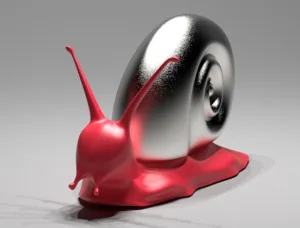A new technique, developed by computer scientists at the University of California, San Diego, has increased the speed of rendering some particularly tricky graphics.
Rendering specular highlights, or glints (such as reflections from uneven surfaces water, metals and other materials), is very complex. Light is scattered in many directions when it hits these surfaces, producing sparkling spots and lines. A computer has to perform thousands or millions of calculations to determine where all of this light should end up.
“There is currently no algorithm that can efficiently render the rough appearance of real specular surfaces,” said Ravi Ramamoorthi of the University. “This is highly unusual in modern computer graphics, where almost any other scene can be rendered given enough computing power.”
The new method is said to be 100 times faster than today’s best techniques. It requires ‘minimal’ computational resources and can be used in animations – current methods can only reproduce glints in still images.
The standard approach to modelling the way that surfaces reflect light is to assume that they are totally smooth at the pixel level. Of course, that is not the case in the real world, and these surfaces can appear noisy or grainy.
Researchers broke down each pixel of an uneven surface into pieces, covered by thousands of lights-reflecting points called microfacets. They then calculated the vector that is perpendicular to the surface of the materials for each microfacet, which is called the point’s normal. The normal is required to work out how light reflects from a surface.
In any specific CG scene, the microfacets reflect light back to the virtual camera only if the microfacet’s normal is located exactly halfway between the ray from the light source and the light ray that bounces back from the surface. Scientists worked out the normals’ distribution within each patch of microfacets and used the distribution to determine which normals were in that halfway point.
The new algorithm can approximate this normal distribution at each surface location, greatly speeding up the process.
The work was presented at Siggraph this week.

